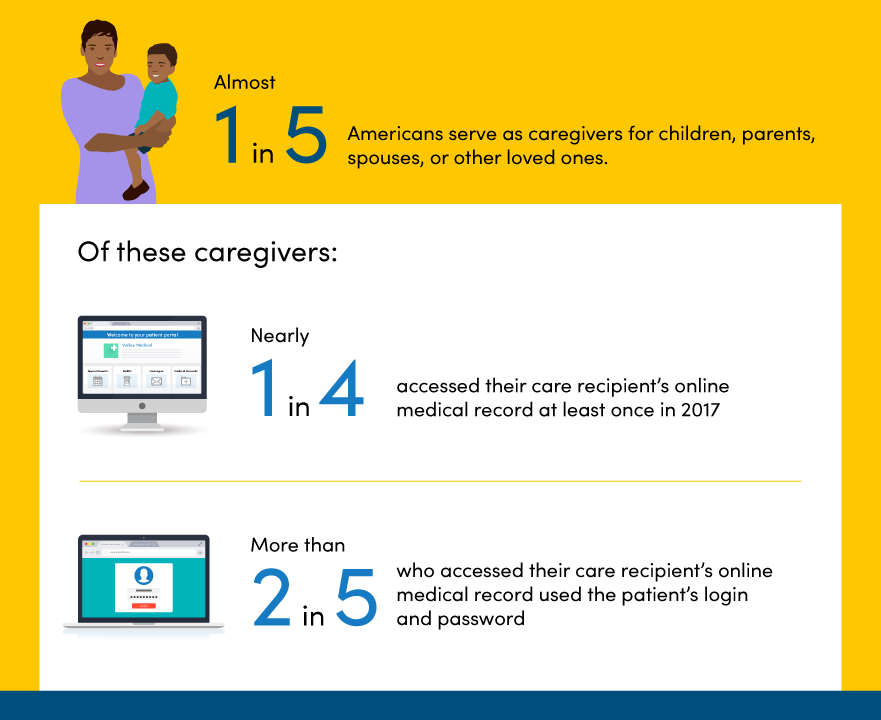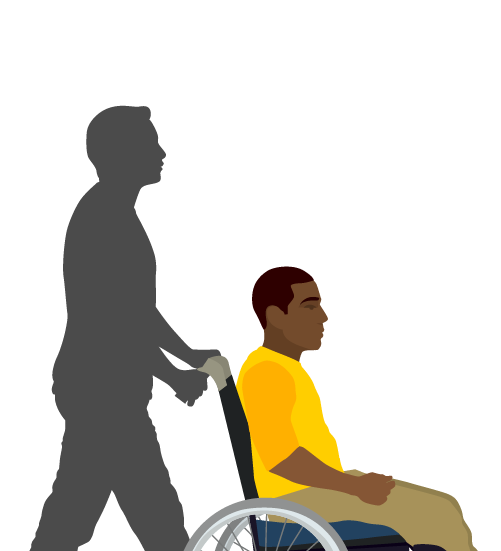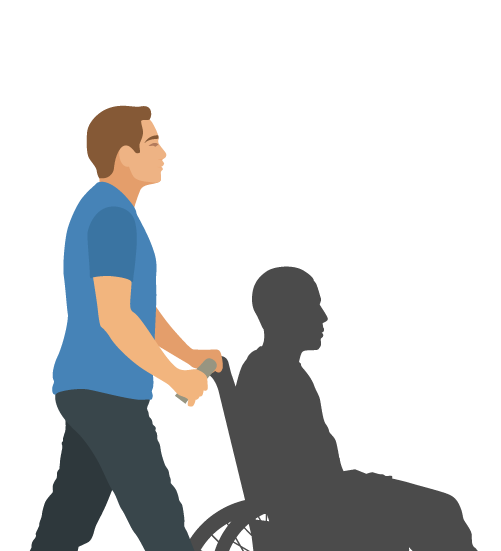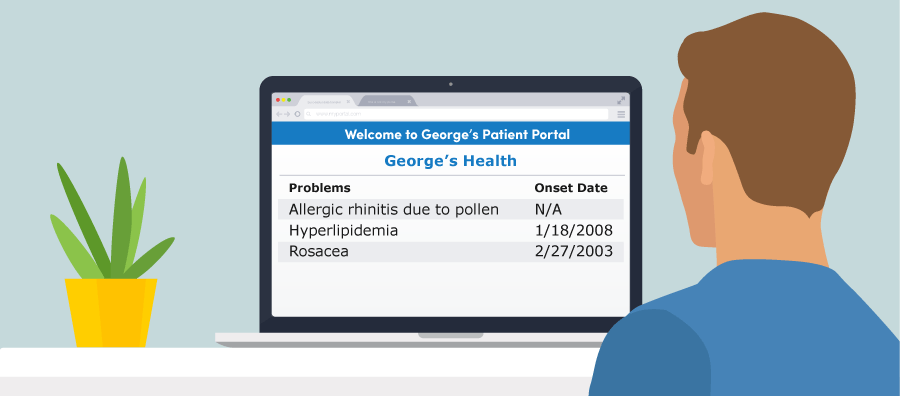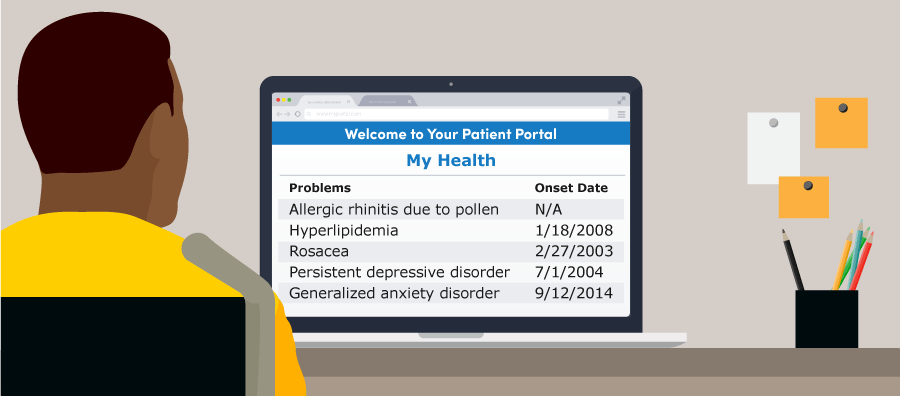Chapter 4
Allow portal access for caregivers
In this chapter
Learn how to:
- Set up levels of access so patients and caregivers can see different information
- Help patients engage in advance care planning (ACP)
Allowing family members and caregivers to access patient health information through a portal is becoming much more common. In 2017, 86% of non-federal acute care hospitals reported offering this access to patients and their loved ones. 57
Despite this, clinicians and practice administrators often struggle to navigate federal and state laws related to proxy access (allowing someone other than the patient to see a patient’s health information). Laws like the Health Insurance Portability and Accountability Act (HIPAA) are designed to keep patients’ medical records and personal health information private and secure.
However, in some situations it is appropriate or necessary for a family member, friend, or other caregiver to have access to a patient’s health information so that they may coordinate, deliver, or oversee care.
Other examples of people who may need to access patient information include:
- A home health aide to a chronically ill patient
- A health care power of attorney responsible for an incapacitated patient’s medical decisions and care 59
Under HIPAA, a patient’s personal representative (someone authorized under state or other applicable law to act on behalf of the patient) has a right to access the patient’s personal health information. The patient also has a right to allow their personal representative to share this information with someone else, like a doctor or hospital. 60
The opportunities created by caregiver access to patient portals include: 61
Patient Success Story
Suzanne Mintz, caretaker
"Portals make you feel like you are a member of your own care team."
- Enabling providers to differentiate with whom they are exchanging secure messages: the patient or someone else involved in their care
- The ability to respect patient preferences for including others in their care
- Improved transitional care by providing family caregivers with timely, accurate, and comprehensive information after patients have been discharged from the hospital
- Greater collaboration between clinicians and family caregivers
- More impactful involvement of caregivers in patients’ self-management plans
- Greater information transparency, which enables family caregivers to alert clinicians to missing or inaccurate information in patients’ health records
Increasing shared access to patient portals by caregivers is the next step in patient engagement. It has the potential to increase clinical quality and patient safety, add to the convenience and timeliness of health system interactions, and strengthen partnerships between patients, caregivers, and clinicians.
Tips for Practice Administrators 62
Practice administrators can take steps to enable caregivers’ access.
- See if your EHR vendor allows providers to set varying levels of access to a patient’s portal information
- Work with your EHR vendor to make sure you can give each personal representative a unique, secure login to access the patient’s portal
- Make sure that staff and clinicians understand registration processes for granting shared/proxy access — and identify practice workflows for implementation
- Consider strategies to promote awareness about the availability of shared/proxy access among your patients, staff, and clinicians
Tips for Clinicians
Clinicians play an important role in managing caregivers’ access.
- Talk with your patient to find out who is involved in their care
- Ask about your patient’s preferences for giving caregivers access to their health information (HIPAA generally allows a provider to share health information with family members or friends involved in the patient’s care unless the patient objects) 63
- Customize caregivers’ access to your patient’s portal information, if possible
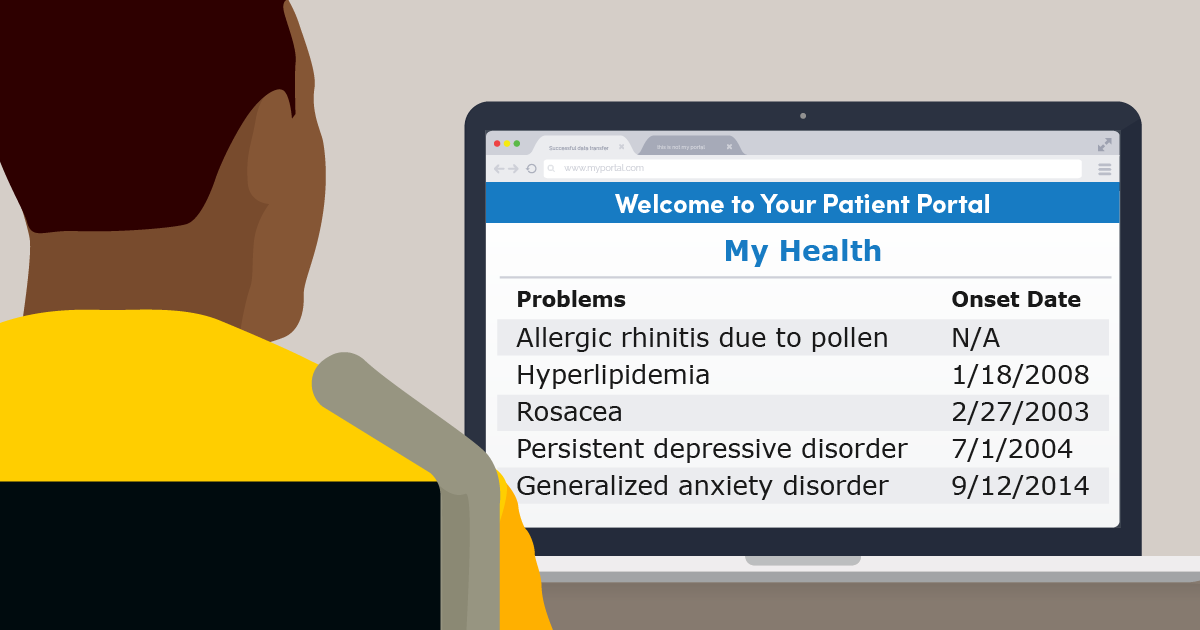
4.1 Set up varying levels of access
Many patient portals still offer a one-size-fits-all approach to information access where anyone with the right login can see the full medical record. Some patients share their own login credentials with their caregivers, but this gives caregivers unlimited access to the patient’s information — including being able to view private messages to or from clinicians.
An environmental scan of 20 large and geographically diverse health systems found that the majority of them give caregivers full access to patient portal information and features, yet the researchers also reported that patients’ preferences for sharing their health information with others involved in their care vary widely. The study indicates there’s still much to be done in both promoting awareness and differentiating levels of access that respect patients’ choice and control of their health information. 64
Establishing different levels of access can help you balance the competing needs of patient privacy and caregiver access. Giving caregivers their own unique login to your portal has other advantages beyond respecting patient privacy. It can also:
- Increase security by tracking the portal use of each individual, instead of a caregiver using a patient’s credentials 65
- Increase the amount of meaningful data available to learning health systems by capturing both patient-reported and caregiver-reported data 66
Tip for Practice Administrators
Allow patients and their representatives to see different information and access different features, depending on a patient’s needs and characteristics as well as relevant laws.
4.2 Integrate advance care planning documents
Try this tool!
Share the PREPARE website with your patients to help them with end-of-life planning.
End-of-life planning, or advance care planning (ACP), has been shown to increase patients’ satisfaction with their health care and improve quality of life for people with a terminal illness. 67 But completing and documenting this process can be challenging for both patients and clinicians.
Patient portals can help with advance care planning discussions and boost patient satisfaction. 68 If your portal includes an ACP feature, consider promoting it to your patients. In lieu of that, some systems include the ability for patients to securely upload documents. If that’s an option, invite patients to add a PDF copy of their plan to their electronic record.
Planning for End-of-Life Decisions with Your Patients
Patients and their families can benefit from making end-of-life decisions ahead of time. Training health practice staff on how to approach this sensitive topic can help patients feel more comfortable making these decisions. Complete this module to learn the 4 steps to helping patients prepare their end-of-life letter.
Go to the AMA STEPS Forward™ Planning for End-of-Life Decisions with Your Patients module.
Chapter 4 Recap
To help meet patient and caregiver needs:
- Set up varying levels of portal access
- Help patients engage in advance care planning
Content last updated on: May 31, 2019

